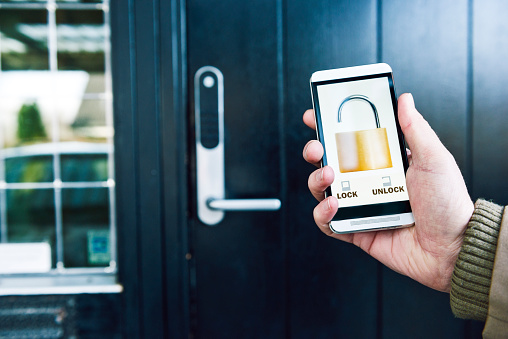Unlocking the Door to Building Security: How Virtual Doorman Systems Work
A virtual doorman system is an innovative solution that can enhance building security and management while providing convenience for residents, tenants, and visitors. It is a digital system that replaces the traditional human doorman or security guard with cloud-connected cameras, access control hardware, and video intercoms.
In a traditional virtual doorman system, human operators are stationed at remote command and control centers. They monitor the building’s front door and other areas through surveillance cameras, and they communicate with visitors and residents through an intercom station with a camera. The operators can unlock the door through wired or telephone line door release mechanisms or call residents to inform them of the arrival of their guests.
However, modern virtual doorman systems
have evolved to include advanced technology that can perform most of the building management, security, communication, and access control tasks without the need for human operators. These systems consist of cloud-connected cameras, video intercom, and access control hardware that allow residents, tenants, visitors, and deliveries to access the building using various credentials such as mobile, facial recognition, RFID cards or fobs, and PIN code credentials.
One of the significant differences between a virtual doorman system and a video intercom system is that virtual doorman systems rely on human operators to perform most of the tasks. In contrast, modern video intercom systems can operate as a standalone automated system, or they can be integrated into a fully or partially staffed remote doorman system.
Video intercom systems allow visitors to communicate with residents and tenants through a video intercom, and they can grant access to the building through a variety of access control methods, including card readers, key fobs, or mobile credentials. They are suitable for smaller buildings with fewer units that do not require extensive security and management features.
On the other hand
virtual doorman systems are more suitable for larger buildings with multiple entrances and a higher number of residents and tenants. They provide a higher level of security and management, as human operators can monitor the building’s activities and respond to emergencies promptly.
Virtual doorman systems are also more flexible than traditional doorman or security guard solutions. They can be customized to fit the specific needs of a building, and they can be updated and modified easily. Additionally, they can reduce the cost of building management and security by eliminating the need for on-site staff.
conclusion:
virtual doorman systems are an innovative solution that can enhance building security and management while providing convenience for residents, tenants, and visitors. They rely on advanced technology to perform most of the tasks that would traditionally require human operators, and they can be customized to fit the specific needs of a building. While video intercom systems are suitable for smaller buildings with fewer units, virtual doorman systems are more suitable for larger buildings with multiple entrances and a higher number of residents and tenants. Ultimately, the choice between these two solutions depends on the specific needs and requirements of the building.



